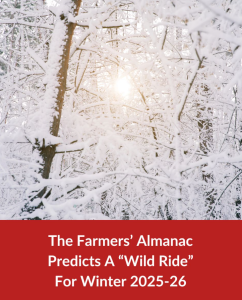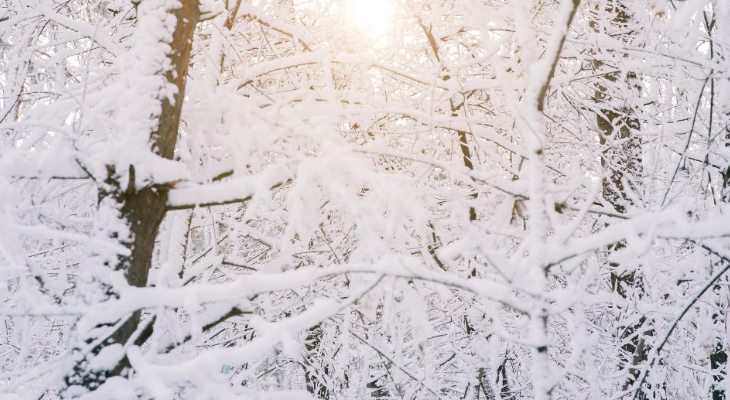The Farmers’ Almanac has released its highly anticipated forecast for the winter of 2025–2026, and according to their long-range predictions, Americans should brace for what they’re calling a “wild ride.” The publication, which has been providing seasonal weather outlooks since 1818, uses a proprietary formula that considers sunspot activity, tidal action, planetary positions, and historical weather patterns to forecast months in advance. While skeptics often question its accuracy, the Almanac has built a loyal following of readers who swear by its uncanny ability to get the “feel” of a season right.
For the upcoming winter, the Farmers’ Almanac is predicting dramatic shifts between unseasonably mild stretches and sudden, intense cold snaps. This back-and-forth pattern is expected to keep people guessing—and shivering—throughout the season. According to the forecast, December will bring an early blast of Arctic air to much of the Midwest and Northeast, followed by a brief but deceptive warm-up around the holidays. Then, in January, winter will come roaring back with some of the coldest air in years plunging into the central and eastern U.S.
Snow lovers will have plenty to celebrate. The Almanac’s outlook suggests that several major snowstorms could sweep across the Great Lakes, New England, and parts of the Mid-Atlantic. In fact, the forecast warns of a “storm parade” in late January and early February, when multiple systems could dump heavy snow within a short timeframe. Ice storms are also on the radar, particularly for regions along the Mason-Dixon line, where fluctuating temperatures could cause dangerous layers of ice to accumulate on roads and power lines.
In contrast, the western half of the country will experience a different kind of volatility. The Pacific Northwest is expected to see more rain than snow at lower elevations due to warmer-than-average Pacific air pushing inland. Meanwhile, the Rocky Mountain states could get buried under above-normal snowfall, creating excellent conditions for ski resorts but challenging travel for locals. California’s Sierra Nevada may also see an abundance of snowpack, which would be welcome news for the state’s water supply.
One of the most eye-catching predictions in the report is the expectation of a rare February thaw in the central U.S., which could see temperatures surge into the 50s and 60s for a short period before plummeting again. This pattern could be particularly hard on agriculture, as early budding plants may be damaged by the return of freezing temperatures. Farmers, gardeners, and orchard owners are urged to plan carefully to protect crops and trees from sudden weather swings.
The South won’t escape the chaos either. While much of the Deep South will see above-average rainfall, occasional intrusions of Arctic air could bring rare snow or ice events to places like northern Texas, Georgia, and the Carolinas. The Almanac warns that southern states should not be lulled into a false sense of security by mild spells—they could still experience disruptive winter weather.
Another factor in the “wild ride” is the possibility of an active El Niño pattern lingering into the winter. El Niño tends to shift storm tracks and alter precipitation patterns, and the Almanac notes that its presence could amplify the swings between wet and dry periods in certain regions. Coastal storms, including nor’easters, could be more frequent and more intense, particularly along the Eastern Seaboard.
In addition to the day-to-day weather drama, the Almanac offers some timeless, old-fashioned advice for surviving the season: stock up on essentials before the first big storm, prepare for potential power outages, and make sure heating systems are in good working order well before temperatures plummet. The publication also reminds readers that even in the face of unpredictable weather, there are opportunities to enjoy the beauty of winter—from snowy landscapes and ice skating to cozy nights by the fire.
Ultimately, whether the Farmers’ Almanac’s predictions prove spot-on or not, the idea of a “wild ride” serves as a timely reminder that weather is rarely static, and adaptability is key. For those who relish the unpredictability of the season, the winter of 2025–2026 could be an exciting and memorable one. For others, it’s a signal to get ready for anything—because this winter might just have a surprise around every corner.
If you want, I can also break this down into a month-by-month winter 2025–26 outlook based on the Almanac’s predictions so it’s easier to see what to expect


